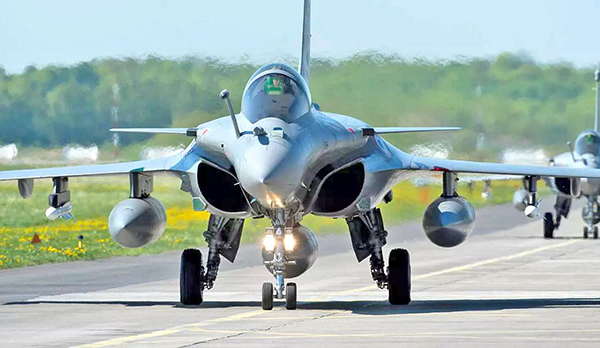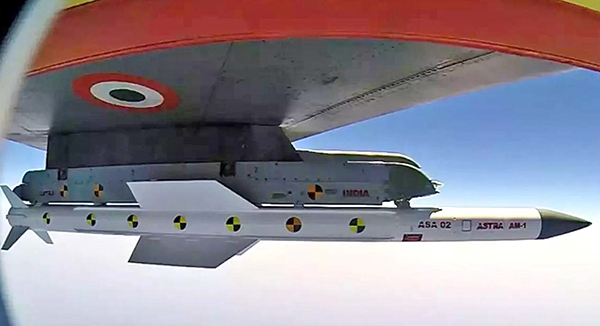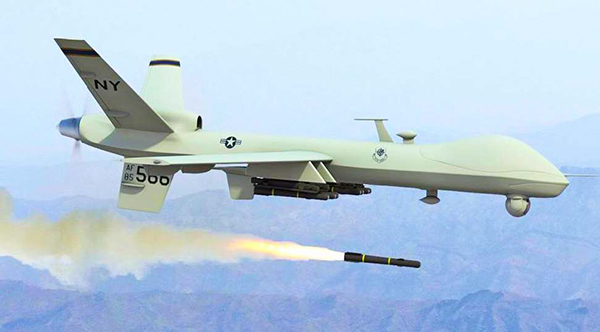
Both India and China have significantly reinforced their deployments with fighter jets, helicopters, tanks, heavy artillery and missiles in the region that has garnered extensive global attention in recent weeks, particularly after the bloodshed along the LAC in Galwan Valley on June 15 in which 20 Indian soldiers died in the line of duty.
It was with a sense of urgency that the Defence Acquisition Council (DAC) in its meeting, on 2 July, accorded approval for capital acquisition of various platforms and equipment required by the Indian Armed Forces. Proposals for an approximate cost of Rs 38,900 crore were approved.
The DAC also approved, among others, the indigenous design and development Long Range Land Attack Cruise Missile Systems and Astra Missiles for the Indian Navy and Indian Air Force (IAF). Addition of Long Range Land Attack Missile Systems having a firing range of 1,000 kilometres to the existing arsenal will bolster the attack capabilities of the Navy and the Air Force. Similarly induction of Astra Missiles having Beyond Visual Range capability will serve as a force multiplier and immensely add to the strike capability of the Navy and Air Force.
Addressing the long felt need of the IAF to increase its fighter squadrons, the DAC also approved the proposal for procurement of 21 MIG-29 along with upgradation of existing 59 MIG-29 aircraft and procurement of 12 Su-30 MKI aircraft. While the MIG 29 procurement and upgradation from Russia is estimated to cost Rs 7,418 crore, the Su-30 MKI will be procured from Hindustan Aeronautics Limited (HAL) at an estimated cost of Rs 10,730 crore.
Astra BVRAAM Missiles
DAC cleared the purchase of 248 indigenously developed Astra beyond-visual-range air-to-air missile (BVRAAM) for the IAF. India’s first indigenous air-to-air missile, Astra has been developed by the Defence Research and Development Organisation (DRDO). The missile has been tested by the DRDO and the IAF at least 27 times since it was first fired.
The first lot of 50 pre-production Astra Mk1 BVRAAM already has been delivered to IAF, which will be integrated into existing Su-30MKI fleet and another 100 will go to MiG-29UPG which after avionics upgrade and HAL developed Mission Computer will be next to get software upgrade patch for Astra Mk1 integration with the Zhuk-ME electronically scanned slotted planar array radar.
IAF will start getting 200 Astra Mk1 for Mig-29UPG and Su-30MKI fleet from 2021 onwards but our previous report (200 Astra Mk1 order soon with two different seekers ) hints at possible two seekers.
The Indian Navy also flies MiG-29Ks that have many updated features in common with the SMT and UPG variants will also get 48 Astra BVRAAM which will supplement Russian R-77 BVRAAM.
Tejas Mk1A will be third fighter jets which will get Astra Mk1 BVRAAM from 2024 onwards for which IAF might place orders for another 300 lot over 200 currently placed as per information provided to idrw.org.
Plans to integrate Astra Mk1 BVRAAM also on Mirage-2000 fleet that has been discussed but it will require French cooperation for source code of the Thales RDY 2 radar for the development of software which will allow Mission computer and Radar to talk to Astra Mk1 missiles for taking out the target.
Additional Sukhois and MiG-29s
The acquisition proposal for the purchase of 33 new aircraft for the Indian Air Force has been valued at an estimated Rs 5,000 crore.
The IAF has already initiated the process to strengthen its aerial might with the purchase of 12 new Sukhoi-30MKI and 21 new upgraded MiG-29s.
This will be the second lot of 33 new aircraft to be acquired by the Air Force after the contract was signed in 2016 for 36 Rafale aircraft. The Indian Air Force has also proposed that the government purchase the entire lot of equipment associated with the fighter planes in an apparent bid to prevent the issue of spares in the future.
First batch of Rafales Arrives
India received the first batch of five Rafale medium multi-role fighter jets on 29 July, when they landed at strategically located Ambala Air Force Base to join the Golden Arrows squadron. Five other Rafale fighters taken over by the IAF have been held back in France for training purposes.
The Rafale jets will significantly enhance the IAF’s overall combat capability and will send a clear message to India’s “adversaries”.
India had signed an inter-governmental agreement with France in September 2016 for procurement of 36 Rafale fighter jets at a cost of around Rs 58,000 crore.
The aircraft is capable of carrying a range of potent weapons. European missile maker MBDA’s Meteor beyond visual range air-to-air missile (AAM) and Scalp cruise missile will be the mainstay of the weapons package of the Rafale jets. Meteor is the next generation of BVR air-to-air missile (BVRAAM) designed to revolutionise air-to-air combat. The weapon has been developed by MBDA to combat common threats facing the UK, Germany, Italy, France, Spain and Sweden.
Besides the missile systems, the Rafale jets have come with various India-specific modifications, including Israeli helmet-mounted displays, radar warning receivers, low-band jammers, 10-hour flight data recording, infra-red search and tracking systems among others.
The second squadron of Rafale will be stationed at Hashimara base in West Bengal. The IAF spent around Rs 400 crore to develop infrastructure like shelters, hangars and maintenance facilities at the two bases.
Out of the 36 Rafale jets, 30 will be fighter jets and six will be trainers. The trainer jets will be twin-seater and they will have almost all the features of the fighter jets.
Predator-B Drones
In the wake of multiple prolonged stand-offs with the Chinese People’s Liberation Army (PLA) in eastern Ladakh, India has conveyed to the US its renewed interest in the medium-altitude long-endurance (MALE) armed Predator-B drone, which not only collects intelligence through surveillance and reconnaissance but also locates and destroys the target with missiles or laser-guided bombs.
While India is operating Israeli Heron unarmed drones in eastern Ladakh, the acquisition of an armed drone has acquired urgency with China not only using Wing Loong II armed drone but also in the process of supplying two systems (one system has two drones and a ground station) to Pakistan. Pakistan is also tying up with China to jointly produce 48 armed drones for use by the Pakistan Air Force. The GJ-2, military version of Wing Loong II, is said to be armed with 12 air-to-surface missiles and is currently being used in the Libyan civil war with limited success.
Although the US has offered to sell 30 Sea Guardian (unarmed naval variant, or UAV, of the Predator-B made by General Atomics) for over $4 billion, national security planners feel that due to the prohibitive cost of the UAV it would be better to have an all-in-one drone rather than separate ones for surveillance and targeting. Even though the Indian Navy is playing a lead role in negotiations with the US, the Indian Army is all in favour of the Predator-B. Also called the MQ-9 Reaper, the armed drone is battle-proven in the Iraq, Afghanistan and Syrian theatres with the capability of carrying four Hell-Fire missiles and two 500 pounds of laser-guided bombs.
Indian private sector companies are also now in the process of developing medium altitude long endurance (MALE) drones but the capacity to acquire armed drones will take time. A number of experiments done in Ladakh have not been entirely successful with the drone being lost in high-velocity winds on the Tibetan plateau. The Defence Research and Development Organisation (DRDO) has plans to produce the MALE Rustom drone prototype by the end of this year.
=======================
DAC Approvals
In addition to the additionakl fighter jets and the indigenous development of land attack cruise missiles and Astra BVRAAMs approved by the DAC in its meeting, on 2 July, approval was also accorded for equipment to be manufactured in India involving Indian defence industry with participation of several MSMEs as prime tier vendors. The indigenous content in some of these projects is up to 80 per cent of the project cost. A large number of these projects have been made possible due to Transfer of Technology (ToT) by Defence Research and Development Organisation (DRDO) to the indigenous industry. These include Pinaka ammunitions, BMP armament upgrades and software defined radios for the Indian Army. The cost of these design and development proposals is in the range of Rs 20,400 crore.
Acquisition of new/additional missile systems will add to the fire power of three Services. While acquisition of Pinaka missile systems will enable raising additional regiments over and above the ones already inducted, addition of Long Range Land Attack Missile Systems having a firing range of 1,000 kilometres to the existing arsenal will bolster the attack capabilities of the Navy and the Air Force.




















[…] ALSO READ IAF MODERNISATION: Arming to be Ready […]